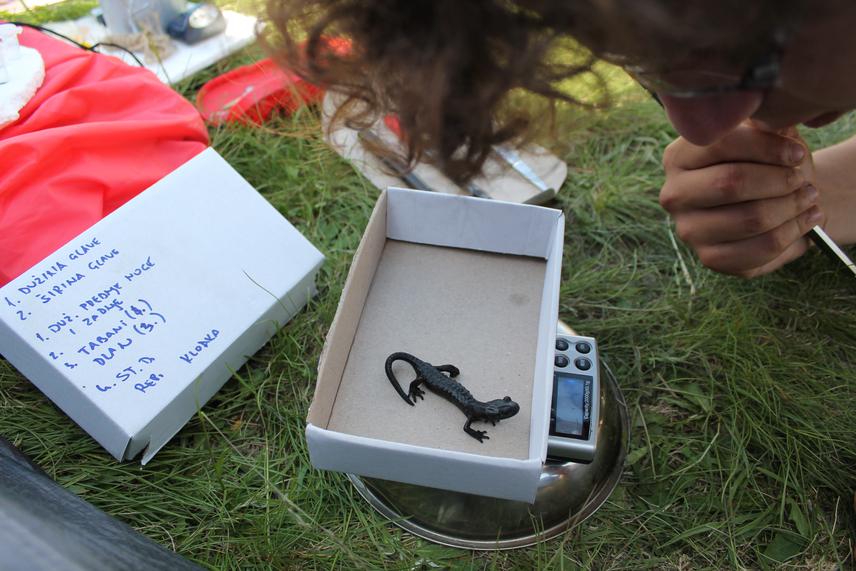Emina Sunje
Other projects
10 Jun 2015
Establishment of Regional Conservation Plan for Endagered Populations of Black Salamander from Mt. Prenj
27 Feb 2018
Establishment of the Regional Monitoring Program for the Dinaric Populations of Alpine Salamanders
Project aims to define the distribution and conservation status of Prenj black Salamander on several mountains in Bosnia and Hercegovina: Prenj, Čvrsnica, Treskavica, Maglić. During field activities, several biological data will be collected and new scientific data provided.

This project has several aims:
1. Define the distribution (areal) of S. atra prenjensis in Bosnia and Hercegovina
2. Conduct several biological analyzes and provide new scientific data
3. Define conservation units and establish a long term monitoring system
4. Raise public awareness and involvement of local people
Field investigations will be performed on several mountains (Prenj, Čvrsnica, Treskavica, Maglić) which should clarify Salamandra atra distribution in BiH. Defining the distribution is crucial for preparing the proposition for protection and monitoring of established habitat-areas that will be suggested to local government. BiH is starting the preparations for entering in EU and one of the first things will be to prepare the Natura2000 sites for species listed in Habitat Directive, appendix IV, which is the case of Salamandra atra. However, considering that Salamandra atra aurorae is listed on appendix II, Salamandra atra prenjensis could have a similar signal function for the local government in the designation of critical Natura2000 habitats.
During field investigation, biological data will be collected and new scientific data provided. Biological research include: measurements of chosen morphological parameters; definition of optimal and crucial ecological factors (temperature, humidity) affecting the appearance of Salamandra atra; ethological studies related to reproduction and nutrition preferences of the species. Individuals will be also tested on fungal diseases (Chytridiomycosis). A small part of tail tissue will be taken for DNA analyzes and testing possibilities of age identification (skeletochronology technique). Population studies (population density, sex ratio, age structure) will define population qualities and habitat analyzes will clarify the impact of climate change on the disappearance of vast grasslands which are inhabited by the species.
Public awareness will be raised through educational lessons during which community will be introduced to the importance of this species and its protection and conservation. Public will be encouraged to share their data regarding the distribution of the species. Lectures will be organized at different educational institutions in all areas where we suspect Salamandra atra occurs. Crucial participants besides children and students are going to be professors, mountaineers and alpinists as well as people who have a big interest in nature and its protection - members of different NGOs who are dealing with nature protection issues and other activists.
This short-term project it is planed to become part of a future large-scale regional project for conservation and monitoring of Salamandra atra in the Balkans.